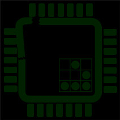The Interagency International Cybersecurity Standardization Working Group (IICS WG) was established in December 2015 by the National Security Council’s Cyber Interagency Policy Committee. Its purpose is to coordinate on major issues in international cybersecurity standardization and thereby enhance U.S. federal agency participation in the process. Effective U.S. Government participation involves coordinating across the federal government and working with the U.S. private sector. The U.S. relies more heavily on the private sector for standards development than do many other countries. Companies and industry groups, academic institutions, professional societies, consumer groups, and other interested parties are major contributors to this process. Further, the many Standards Developing Organizations (SDOs) which provide the infrastructure for the standards development are overwhelmingly private sector organizations. On April 25, 2017, the IICS WG established an Internet of Things (IoT) Task Group to determine the current state of international cybersecurity standards development for IoT. This report is intended for use by the working group member agencies to assist them in their standards planning and to help coordinate U.S. Government participation in international cybersecurity standardization for IoT. Other organizations may also find this document useful in their planning.
https://csrc.nist.gov/publications/detail/nistir/8200/final
https://csrc.nist.gov/News/2018/NIST-Publishes-Interagency-Report-(NISTIR)-8200

You must be logged in to post a comment.